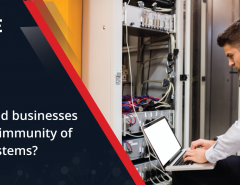Authentication can easily be termed as the foundation of any eBusiness. With companies expanding their audience-base, it becomes important that they concentrate on user-authentication for validating and securing their identity. Reliable authentication also lays the foundation for asset and data protection while keeping attacks and breaches at bay. Moreover, with security service providers relying heavily on a multi-layered cybersecurity strategy, it is only appropriate that user authentication is regarded as an integral part of the network security layer— safeguarding the data channels.
What is User Authentication?
User authentication is a technique to validate or verify a human-to-machine data or information transfer to establish the authenticity of the concerned individual. Unlike machine authentication that uses automated processes, user authentication involves authorizing logins using personal credentials. Further, there are several metrics associated with user authentication, including possession, inherence, and knowledge. The traditional version of user authentication involves a simple password combination along with the basic ID proof. However, organizations and service providers are increasingly opting for advanced user authentication techniques for safeguarding and securing customer databases, more comprehensively.
Read more: 5 Ways UTM can help you secure your business network
For the user-authentication metrics, companies can either use knowledge factors like ID passwords and usernames or possession factors like OTPs for authenticating logins. In addition to that, advanced inherence factors or biometrics like fingerprint scans, facial recognition, and voice recognition can be used for restricting invasive entries.
Lastly, user location can also be termed as one authentication factor where individuals can deploy smartphone ubiquity for simplifying accessibility. Login locations, GPS tracking, and even MAC address availability are some of the possible authentication options. There are few firms which deploy all of the above mentioned user authentication techniques for drafting a 4FA or 4-Factor Authentication plan.
How Seqrite’s UTM Offers User Authentication as a Feature?
Unified Threat Management solutions combine multi-layered cybersecurity strategies for businesses, thereby safeguarding the entire IT framework while rendering it productive, secure and stable. Seqrite is one reliable security service provider that offers UTM as a gateway security solution. Seqrite’s UTM offers a host of features for enterprises in areas of networking, administration, content filtering, VPN, monitoring and reporting, mail protection, firewall, security services and user authentication.
UTM’s user authentication cumulates a host of services and presents them as a functional module. Some of the more obvious features include internal database authentication and IP/MAC binding which uses knowledge, possession and location for establishing authenticity. Apart from that, Seqrite UTM also offers LDAP or Lightweight Directory Access Protocol integration for creating users and preferentially assigning roles to them, based on authenticity. The LDAP server works as the user database for Active Directory Integration— a feature that allows companies to add users to the organization profile without having to worry about authenticity. UTM comes forth with multiple user-authentication servers in case one fails, abruptly. Seqrite’s UTM also boasts of Guest User and Group-Based Access support for allowing selective users to gain access to the systems sans administrative privileges. Lastly, UTM also offers Captive Portal as a network security feature, allowing shops, businesses, hotels and other venues to come up with public access and user-specific networks. Captive Portal, therefore, authenticates the client by redirecting unauthenticated information onto the authenticated servers.
Gaining Advantage Using User Authentication
Organizations opting for user authentication as a service gain a competitive advantage over others. While multi-factor and two-factor user authentication promotes a safe and secure networking framework for the users, they also help organizations add to their credibility. Employee productivity can be amplified with secured and user-authenticated web access. With the help of Seqrite UTM’s User-Authentication feature, organizations can easily offer public-access networking facilities to the users while allowing group-based or guest login support. In addition to that, Active Directory Integration will enable organizations to seamlessly add new members to the team profile without having to worry about network security threats.
User-Authentication is undoubtedly an essential cog in the existing cybersecurity wheel. With functional User-Authentication features on-board, an organization can keep security breaches at bay and can concentrate better on the cloud-specific features. Be it the creation of safer applications or leveraging advanced authentication techniques, enterprises are best served by user-authentication services, as offered by reliable security solution provider like Seqrite.
As an IT security partner for your business, Seqrite provides comprehensive endpoint security from advanced cyber threats. To know more, visit our website or




